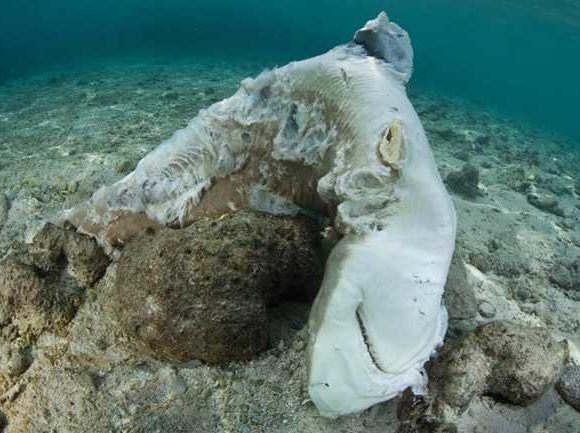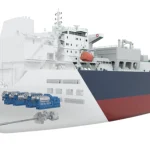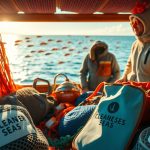Symbiotic Relationships in the Ocean: How Species Depend on Each Other
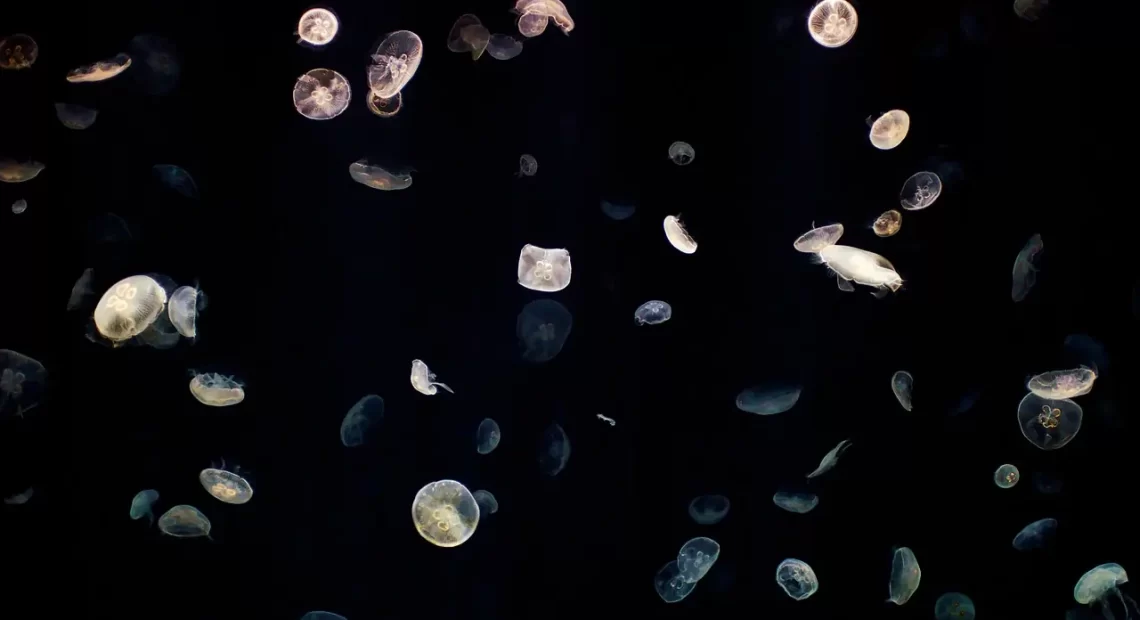
The world’s oceans harbour not just a mere collection of diverse marine life, but rather an intricate tapestry of interdependence. Symbiotic relationships, where different species rely on each other for survival, play a vital role in maintaining the delicate balance of marine ecosystems. In this exploration, we delve into the fascinating world of these connections that bind marine organisms together, exploring the intricacies that define their existence.
Mutualism: Partnerships for Survival
Within the ocean’s depths lies a realm of cooperation that exemplifies the essence of mutualism. A classic illustration is the extraordinary relationship between coral polyps and zooxanthellae. These microscopic algae, residing within coral tissues, engage in a mutual exchange – the algae provide essential nutrients to the corals through photosynthesis, while the corals offer a protected environment. This intricate partnership is not just a cohabitation; it’s a lifeline for coral reefs, highlighting the profound significance of mutualism in the grand tapestry of the ocean’s ecosystem.
Moreover, mutualistic alliances extend beyond coral reefs. Take, for instance, the fascinating collaboration between the pistol shrimp and the goby fish. The shrimp, equipped with a powerful claw, creates burrows in the ocean floor, while the goby, with its keen eyesight, acts as a sentinel, warning the shrimp of potential threats. This cooperative effort not only ensures the safety of both species but also contributes to the health of the surrounding environment.
Commensalism: Hitchhiking to Success
Commensal relationships within the marine realm paint a picture of resourceful coexistence. The remora fish, renowned for its ability to attach itself to larger marine animals, epitomises commensalism. By hitching a ride on sharks, whales, or sea turtles, the remora gains not just mobility but also access to leftover prey that the host captures. This seemingly simple interaction unveils the art of adaptation and survival strategies in the ocean, where one species benefits without imposing significant costs on its unwitting host.
Furthermore, commensalism extends its influence to the depths of the ocean floor. The relationship between the sea cucumber and the pearlfish showcases this phenomenon. The pearlfish takes refuge in the sea cucumber’s anus, utilizing it as a protective shelter. While the sea cucumber remains unaffected, the pearlfish finds security from potential predators. This peculiar partnership highlights the diverse ways in which marine species have evolved to coexist and thrive in the expansive underwater landscapes.
Parasitism: The Price of Existence
In the intricate dance of marine life, parasitic relationships unfold as a compelling narrative of survival at a cost. Parasitism involves one species, the parasite, benefiting at the expense of its host. An exemplary illustration is the relationship between cleaner fish and larger marine species, an intricate dance of mutual dependence. The cleaner fish, by removing parasites and dead skin from their hosts, not only secures a meal but also contributes to the overall health of the host. This delicate balance exemplifies the complexity of symbiotic relationships in the ocean, where survival often comes at the price of coexistence.
However, parasitic interactions extend beyond the visible realm. Microscopic parasites, such as various types of protozoa and helminths, play significant roles in marine ecosystems. They influence nutrient cycling and can regulate host populations, contributing to the intricate balance of life beneath the ocean’s surface.
Synergistic Connections: The Key to Ecosystem Health
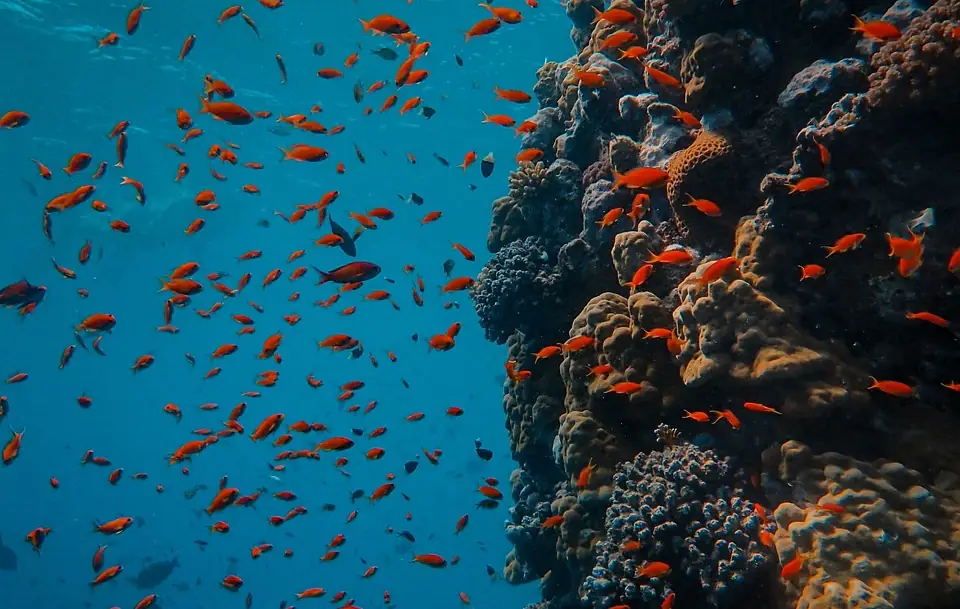
Beyond individual partnerships, the ocean thrives on a multitude of interconnected relationships that shape entire ecosystems. Sea otters, for instance, play a pivotal role in maintaining kelp forest ecosystems. By preying on sea urchins, they prevent these herbivores from overgrazing on kelp, ensuring the balance of the entire ecosystem. This ripple effect of interconnected dependencies emphasises the need for preserving not just individual species but the intricate web of relationships that sustain marine life.
Moreover, synergistic connections manifest in the dynamic dance between predator and prey. The relationship between sharks and seals is a prime example. While sharks are the apex predators, exerting control over seal populations, the seals, in turn, influence the distribution and behavior of their prey, shaping the dynamics of the marine food web. This intricate interplay of ecological relationships underscores the interconnectedness of life in the ocean.
Human Impact: Disrupting the Harmony
As human activities increasingly impact the oceans, symbiotic relationships face unprecedented challenges. Overfishing, pollution, and climate change disrupt the delicate balance that has evolved over millennia. Coral bleaching, for example, not only threatens the vibrant hues of coral reefs but jeopardises the symbiotic relationships between corals and their zooxanthellae, leading to widespread ecological consequences.
The rise of invasive species due to human-mediated introductions poses another threat to existing symbiotic relationships. When non-native species establish themselves in new environments, they can outcompete or prey upon native species, disrupting established ecological balances. This human-induced alteration of ecosystems underscores the urgency for conservation and sustainable practices to mitigate the adverse impacts on marine symbiotic relationships.
Conclusion
The symphony of symbiotic relationships in the ocean underscores the complexity and resilience of marine ecosystems. As stewards of the seas, it is imperative for us to appreciate and protect these connections. By understanding and valuing the interdependence of marine life, we can work towards preserving the delicate balance that sustains the wonders of the ocean, ensuring a harmonious coexistence for generations to come.
Facts and Stats
Coral reefs cover less than 0.1% of the ocean’s surface but support about 25% of all marine species.
The goby and shrimp pairing has become a classic example in marine biology, showcasing the diversity of mutualistic relationships in the ocean.
Remoras have a specialised suction disc on their heads, allowing them to attach securely to their hosts, showcasing the evolution of adaptations in commensal relationships.
The pearlfish’s choice of the sea cucumber’s anus as a refuge is a remarkable example of the diverse strategies marine species employ for survival.
Cleaner fish, such as the cleaner wrasse, can establish “cleaning stations” on coral reefs, where larger fish come to get rid of parasites and dead skin.
Overfishing has led to a decline of approximately 90% in the populations of large predatory fish species like sharks, impacting the delicate balance of marine ecosystems.
Coral bleaching, for example, not only threatens the vibrant hues of coral reefs but jeopardizes the symbiotic relationships between corals and their zooxanthellae, leading to widespread ecological consequences.
More than 30% of the world’s coral reefs are already severely degraded due to factors like climate change, threatening the survival of countless symbiotic relationships within these ecosystems.
The rise of invasive species due to human-mediated introductions poses another threat to existing symbiotic relationships.
Invasive species have been responsible for the decline or extinction of native marine species in many regions, disrupting established symbiotic interactions.
Resources
“The Hidden Life of Coral Reefs” by Peter F. Sale
“Ecology of the Planted Aquarium: A Practical Manual and Scientific Treatise” by Diana Walstad
“Symbiotic Relationships in Marine Animals” by Christopher B. Boyko
Kiers, E. T., Palmer, T. M., Ives, A. R., Bruno, J. F., & Bronstein, J. L. (2010). Mutualisms in a changing world: an evolutionary perspective. Ecology letters, 13(12), 1459-1474.
Hongo, A., Calatayud, S., & Álvarez, F. (2020). Symbiosis in deep-sea hydrothermal vent communities. Frontiers in Marine Science, 7, 831.
Jones, C. G., Lawton, J. H., & Shachak, M. (1994). Organisms as ecosystem engineers. Oikos, 69(3), 373-386.
10 Less Known Facts About Marine Animals



